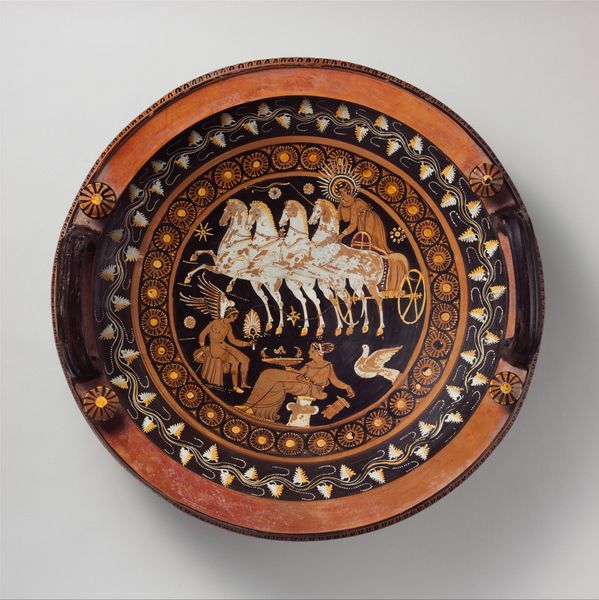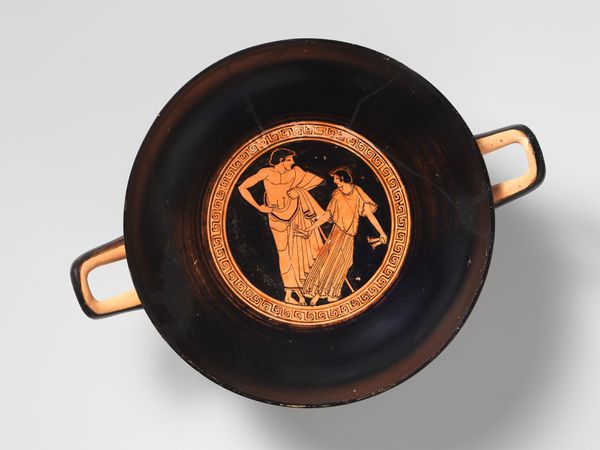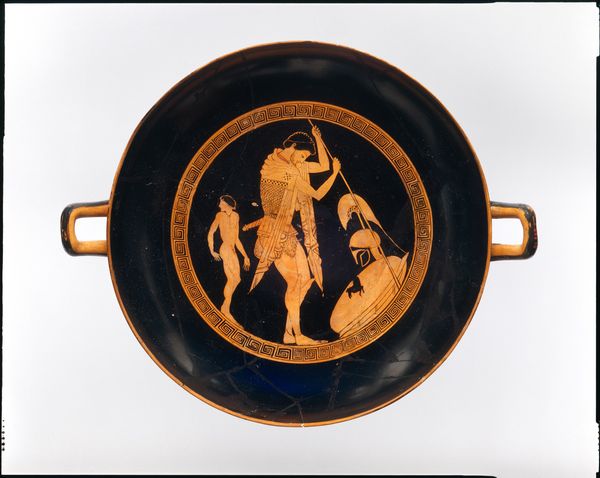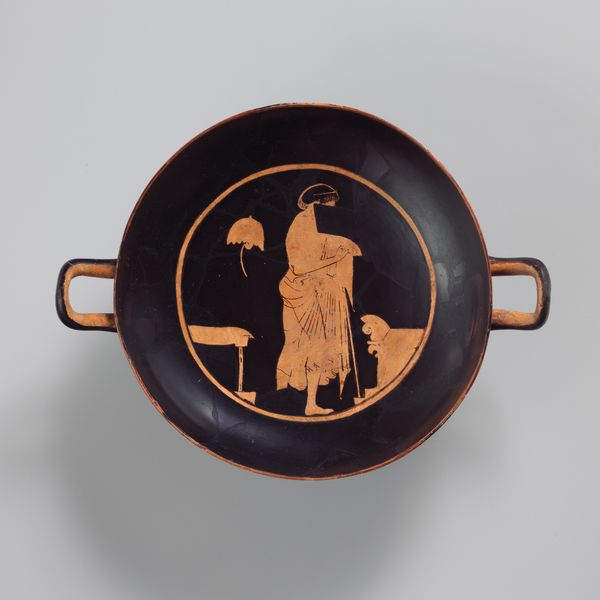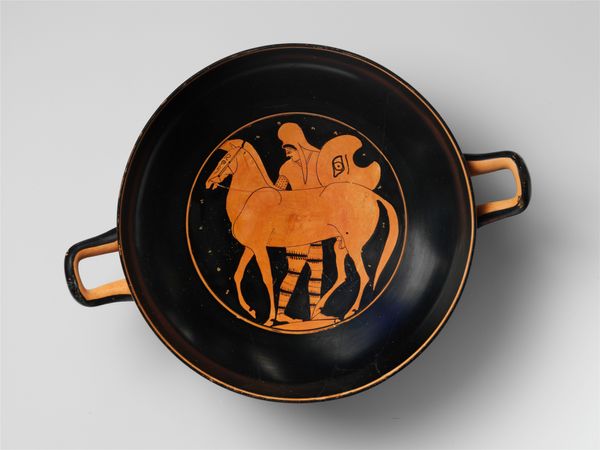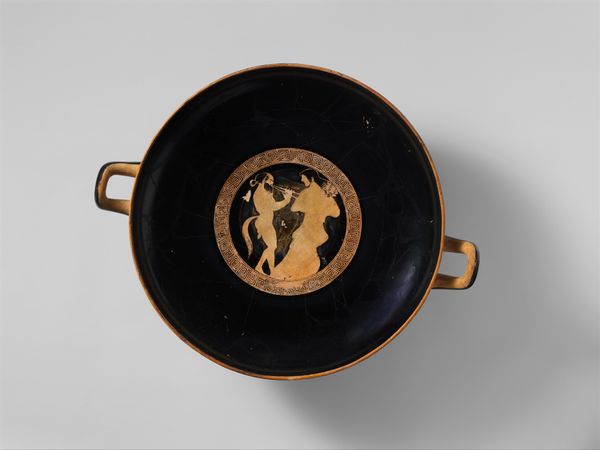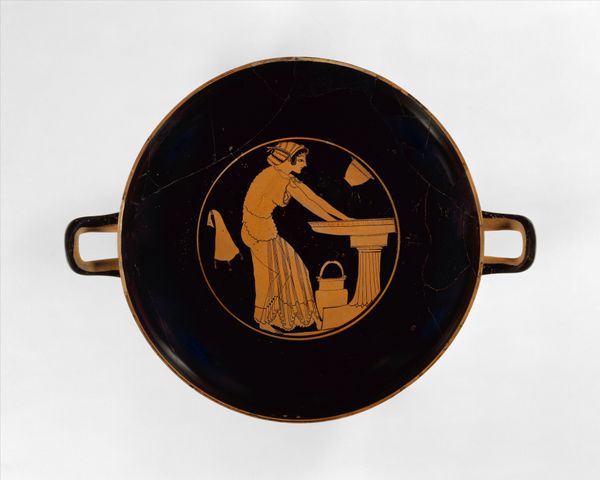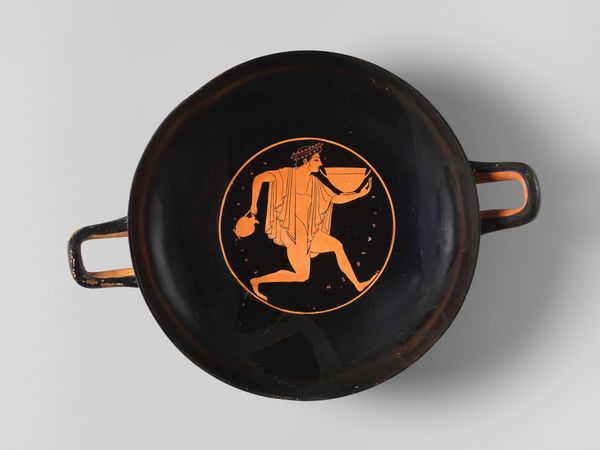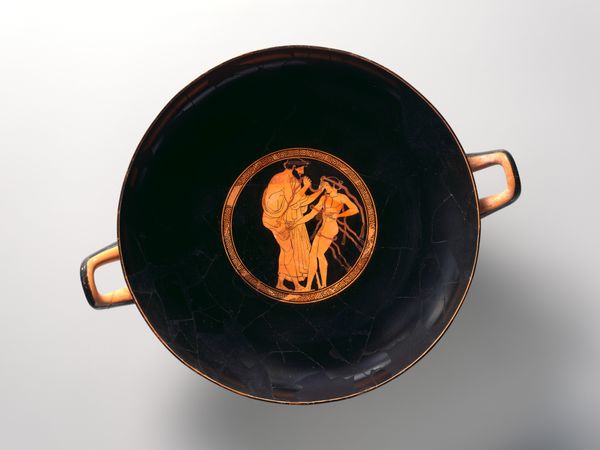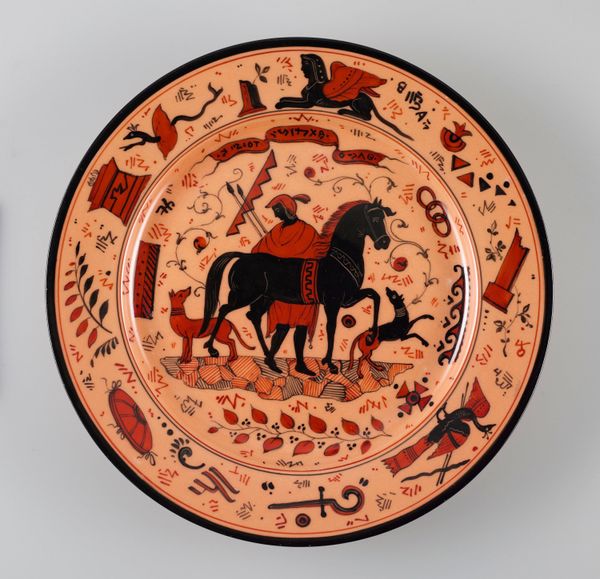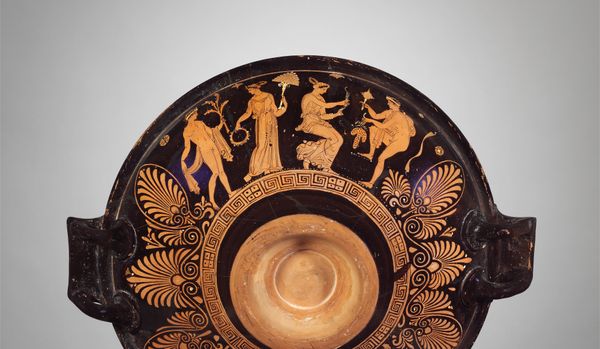
painting, ceramic, earthenware
#
narrative-art
#
pottery
#
painting
#
greek-and-roman-art
#
ceramic
#
figuration
#
earthenware
#
ancient-mediterranean
#
ceramic
#
earthenware
#
history-painting
Copyright: Public domain
Curator: Before us is a Terracotta Lekanis, or dish, crafted around 325 BC. It's currently housed at the Metropolitan Museum of Art. What strikes you most about it? Editor: The contrasting palette. It's immediately captivating—the dark ground against the figure rendered in warm colors creates a dynamic visual tension. And the overall design, framed with those repeating motifs…it’s quite decorative, almost theatrical. Curator: Indeed. Let's consider the process involved. This ceramic piece, likely fashioned using a potter's wheel, represents a fusion of technical skill and artistic vision. Notice the smooth, even surface of the earthenware; the application of slip to create the black glaze. How might these choices reflect societal values of the time? Editor: The black glaze sets off the red figure beautifully. Formally, that central image is all about balance. We have a winged figure seated, a sprig of leaves offering a visual counterweight to the wings on the other side. It creates a satisfying equilibrium, a harmonic design. Curator: It’s believed that the vessel may have had a functional purpose, for containing cosmetics or jewelry perhaps? This connects art directly to the everyday rituals of women in ancient Greece. Editor: Perhaps, but focusing purely on the arrangement of forms, there’s more. The artist employed a language of curves versus straight lines, darks against lights. And, of course, that wave motif. The symmetry provides this incredible harmony. Curator: Looking at the way this piece might have been produced, how the economic structure dictated specialization within craft production, or how the very consumption of such items reinforced status... Editor: Yes, all worthy questions, of course. But my eye is always drawn back to the pure aesthetics. Ultimately, this lekhanis offers more than just utility. It invites us into a world defined by symmetry and decorative balance. Curator: This approach opens avenues to explore function as form and vice versa in craft. The lekhanis stands not merely as an aesthetic statement but also as a tangible record of human enterprise. Editor: And I would maintain it also invites us into this fascinating dialogue between artistic intention, skillful creation, and, ultimately, our subjective visual pleasure.
Comments
No comments
Be the first to comment and join the conversation on the ultimate creative platform.
